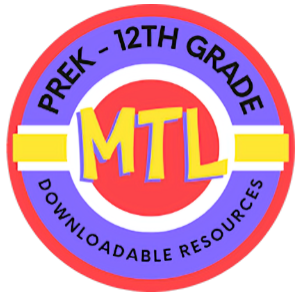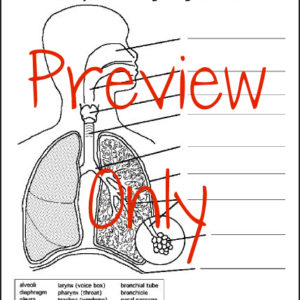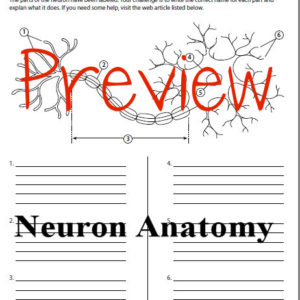Category: Life Science
Showing 21–40 of 104 resultsSorted by latest
-
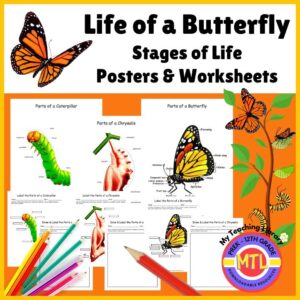 $3.50Buy Now
$3.50Buy NowThis Science / Biology resource provides colorful posters and worksheets for 3 stages of a butterfly’s life cycle: caterpillar, chrysalis, adult butterfly.
Each stage of life comes with a poster (labels showing the parts) and the following 3 worksheets:
#1: Students will label a picture of the specific stage and are given the names of the parts they are to label
#2: Students will label a picture of the specific stage but are not given the names of the parts (as they should have those memorized)
#3: Students are to both draw and label the specific stage. Parts they are to label of given.What parts are labeled for each stage?
- caterpillar: head, thorax, simple eye, mandible, walking leg, abdominal segment, proleg, anal proleg
- chrysalis: cremaster, abdomen, spiracle, wing, metathorax, mesothorax, antenna, prothorax
- adult butterfly: back leg, middle leg, front leg, spiracles, forewing, antenna, hind wing, veins, compound eye, ocellus, anus, proboscis, labial palpus
BONUS: All pages are also included in B/W format!
-
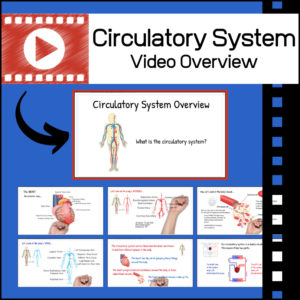 $6.99Buy Now
$6.99Buy NowThis 6:44 minute video product has been created to give BIOLOGY / ANATOMY / HEALTH students an overview of the human body’s circulatory system! Student will learn the major components of the system (names of major arteries and veins as well as parts of the exterior and interior of the heart) as well as the function of the heart, arteries, veins, red blood cells, white blood cells, platelets and plasma.
-
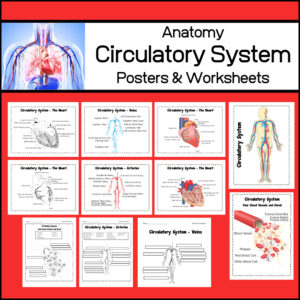 $4.00Buy Now
$4.00Buy NowThis Science / Biology / Health resource will help your students learn about the circulatory system of the human body! Included are 10 posters (each in color and b/w) and 5 different worksheets (each with and without a word bank)!
-
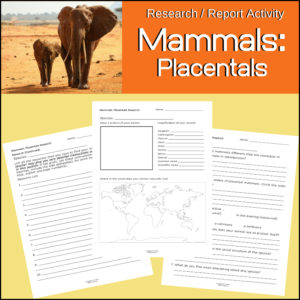 $2.00Buy Now
$2.00Buy NowPlacental mammals are the most diverse group of mammals with about 4000 discovered species and include dogs, cats, rodents, elephants, whales, cattle, pigs, humans and many more! If you are planning a study on these mammals, this product will guide students through their research and can be used as the end reporting tool!
-
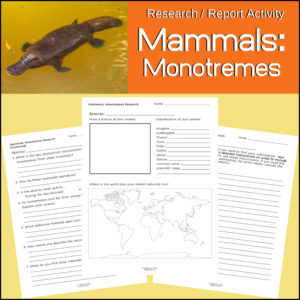 $2.00Buy Now
$2.00Buy NowThis science, animal study activity is designed to guide your students through the researching and reporting of any egg laying mammal (also known as Monotremes). These unusual mammals only reside in Australia and New Guinea. There are only five known species of monotremes: the platypus and four species of echidna.
This product will guide students through their research and can be used as the end reporting tool!
-
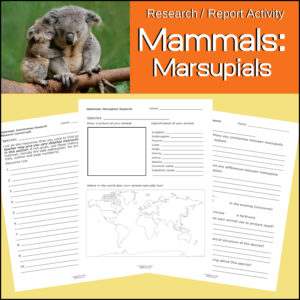 $2.00Buy Now
$2.00Buy NowStudents love kangaroos, wallabies, koalas and other pouch carrying animals also known as marsupials! This resource will guide students through their research on these amazing pouch carrying animals and can be used as the end reporting tool!
-
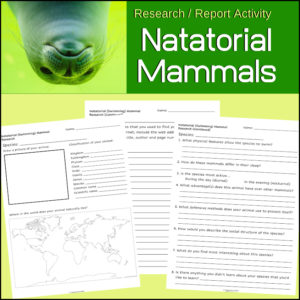 $2.00Buy Now
$2.00Buy NowAny mammal designed to swim such as a whale, sea lion, seal or walrus is considered a natatorial mammal. The term natatorial comes from the Latin natātor, natātōrem meaning “swimmer”. This product is perfect for your students if you want to assign a research & report project on water dwelling mammals. It will guide students through their research and can be used as the end reporting tool!
-
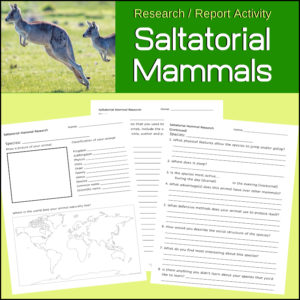 $2.00Buy NowOne way of categorizing animals is how they move. Mammals that are designed to jump, hop, gallop, or leap are called Saltatorial mammals such as the kangaroo, leopard, rabbit, horse, antelope and many others! This product is perfect to use as a research and report assignment to have students study mammals that jump, hop, gallop and/or leap! It will guide students through their research and can be used as the end reporting tool!
$2.00Buy NowOne way of categorizing animals is how they move. Mammals that are designed to jump, hop, gallop, or leap are called Saltatorial mammals such as the kangaroo, leopard, rabbit, horse, antelope and many others! This product is perfect to use as a research and report assignment to have students study mammals that jump, hop, gallop and/or leap! It will guide students through their research and can be used as the end reporting tool! -
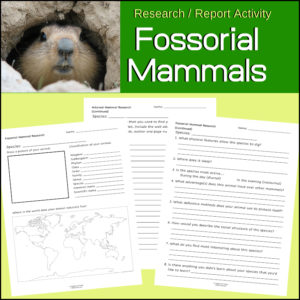 $2.00Buy Now
$2.00Buy NowBurrowing, ground dwelling mammals are known as fossorial mammals. Fossorial comes from the Latin fossor, meaning “digger”, thus mammals such as groundhogs, gophers, moles, rabbits and others are in this group. This resource will help students research and report on fossorial mammals as it guides students through their research and can be used as the end reporting tool!
-
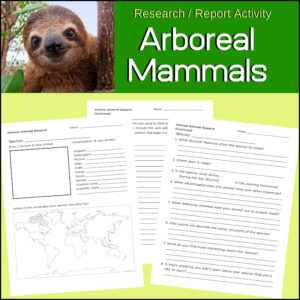 $2.00Buy Now
$2.00Buy NowDuring a study of animals (specifically tree-dwelling, arboreal mammals), students can use this product to research and report on animals such as the koala, monkey, sloth or possum. Any tree dwelling mammal is considered arboreal. Students can use this product as both a guide to their research as well as the end reporting tool!
-
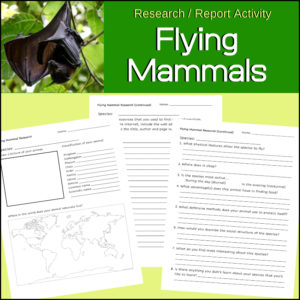 $2.00Buy Now
$2.00Buy NowIn the Science field of Zoology there is a group of mammals that are considered ‘flying’ mammals. This product makes it easy to assign students to research and report on one of these ‘flying’ mammals! Students will be able to use the product to both guide their research and use as their reporting tool.
-
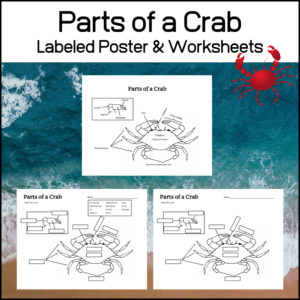 $1.25Buy Now
$1.25Buy NowIs your Science class studying (or preparing to study) ocean life, crustaceans or the phylum Arthropoda? This resource, Parts of a Crab – Poster & Worksheets, includes a labeled poster of a crab and 2 worksheets (or quizzes).
-
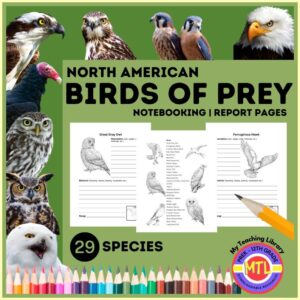 $8.00Buy Now
$8.00Buy Now‘North American Birds of Prey’ is a 41-page resource designed to help students organize and present reports for each 29 different birds of prey species!
Each species-specific page includes the name of the bird, an illustration and the following sections: description (size, weight, color, markings, etc.), behavior (breeding, nesting, feeding, vocalization, etc.) and range plus a map of North America.
In addition to the species-specific pages, there are ten additional pages on which students can included additional information, draw their own illustrations, plus add additional species to their projects.
Use alone or add to your lessons: North American Birds of Prey Cards
This resource includes pages for the following birds:
• Great Gray Owl
• Ferruginous Hawk
• Common Black Hawk
• Red-Tailed Hawk
• Barred Owl
• Barn Owl
• Short-Eared Owl
• Prairie Falcon
• Swainson’s Hawk
• Snowy Owl
• Turkey Vulture
• Eastern Screech Owl
• Burrowing Owl
• American Swallow-Tailed Kite
• Elf Owl
• Osprey
• American Kestrel
• Peregrine Falcon
• Bald Eagle
• Northern Goshawk
• Merlin
• Golden Eagle
• Northern Harrier
• Northern Saw-Whet Owl
• Crested Caracara
• Great Horned Owl
• Sharp-Shinned Hawk
• Harris Hawk
• Long-Eared Owl -
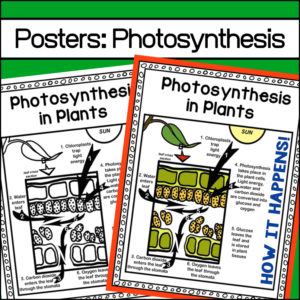 $1.50Buy Now
$1.50Buy NowHere are 2 posters (b/w and color) of the process of photosynthesis.
-
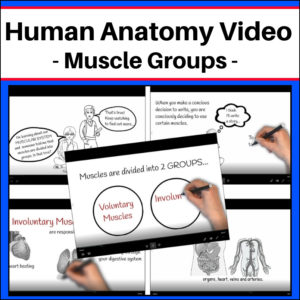 $4.50Buy Now
$4.50Buy NowHuman Anatomy – Muscle Groups Video has been created to introduce, explain and/or review voluntary and involuntary muscles in the human body. Each group is defined, explained and definitions given. This is great for visual learners!
To add student interest, one student is helping another student learn, interesting graphics have been added and upbeat music fills the background. (Music is easily muted if needed.)
-
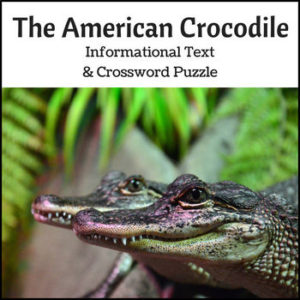 $1.50Buy Now
$1.50Buy NowDesigned for 5th-8th grade students, American Crocodile Informational Text and Crossword Puzzle will provide students with details about the only crocodile native to the Americas in the following categories:
* Appearance
* Differences from alligators
* Distribution and Habitat
* Food and Growth
* ReproductionAfter reading the text (3 pages), students are to complete the crossword puzzle. Answer Key provided.
-
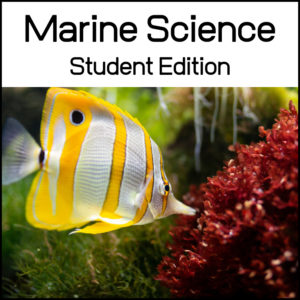 $15.00Buy Now
$15.00Buy NowComplete Marine Science Student Curriculum
Units include: The Hydrosphere, Measuring the Ocean, The Nature of Seawater, Waves, Tides, Ocean Currents, The Ocean Floor, Ocean Sediments, Food Chains & Webs, Ocean Zones, Near-shore Ecosystems, Plankton, Marine Plants, Classifying Marine Animals, Cold-blooded Swimmers, Marine Mammals, Marine Pollution, Marine Resources
Get your Teacher’s Guide here!
-
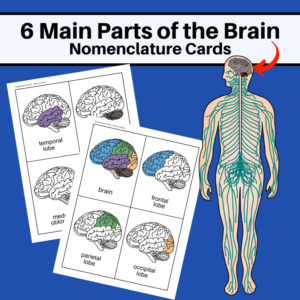 $2.00Buy Now
$2.00Buy Now6 Main Parts of the Brain – Human Anatomy Nomenclature Cards – This resource will help students learn and study the following parts of the brain: frontal lobe, parietal lobe, occipital lobe, temporal lobe, cerebellum and the medulla oblongata.
